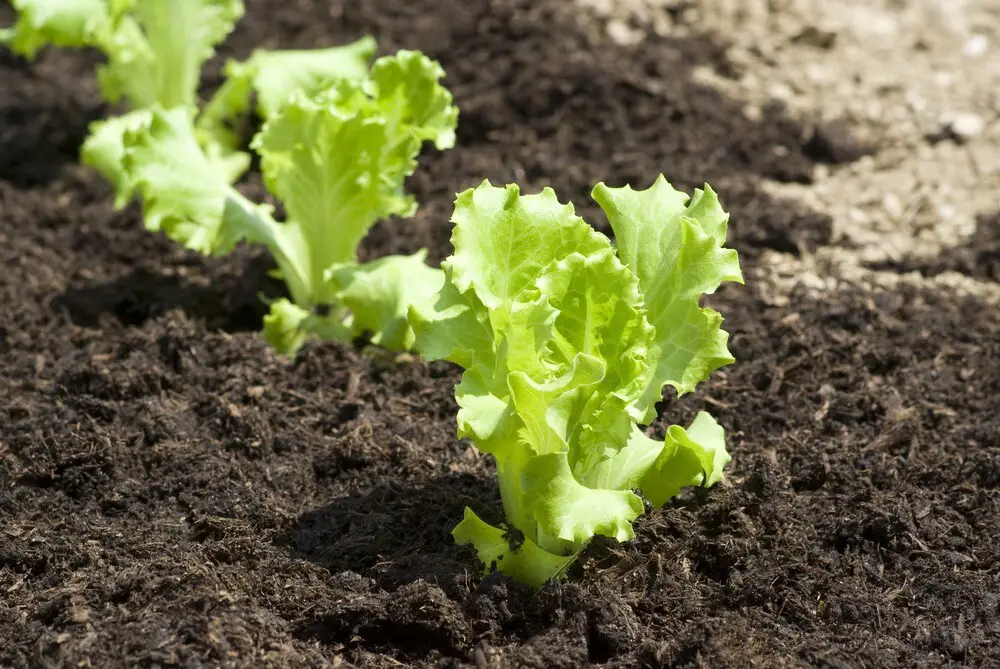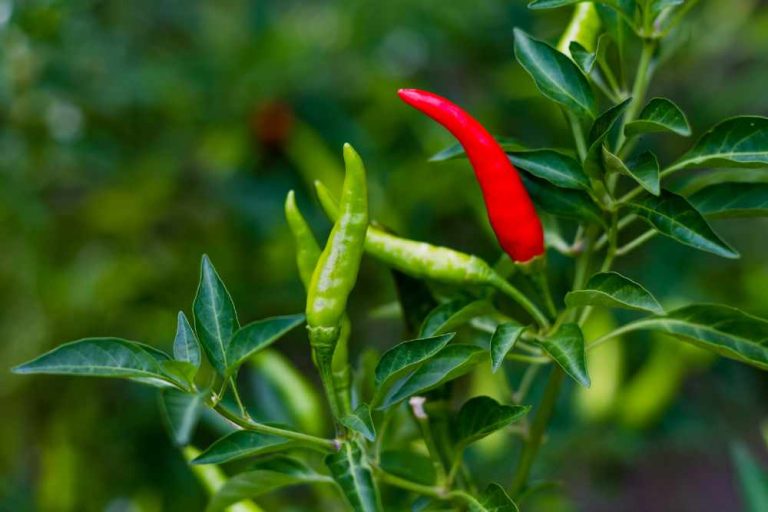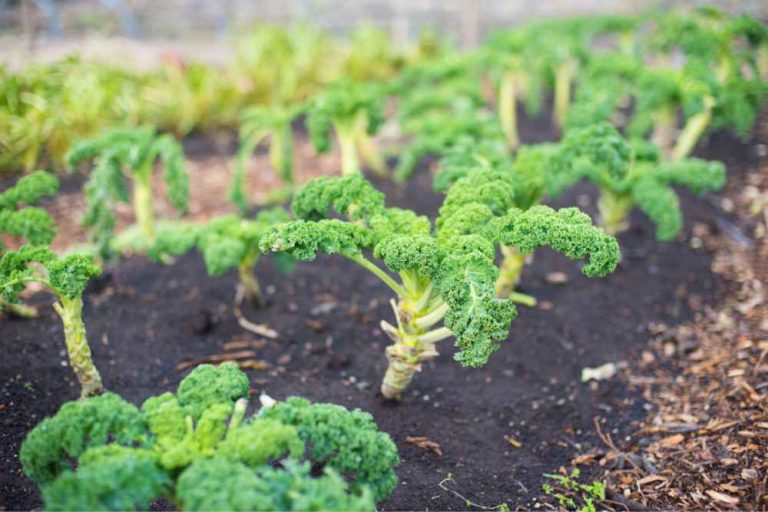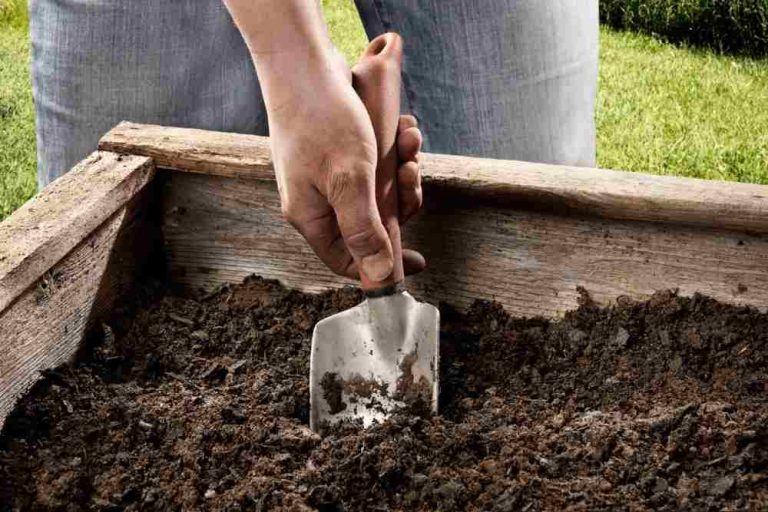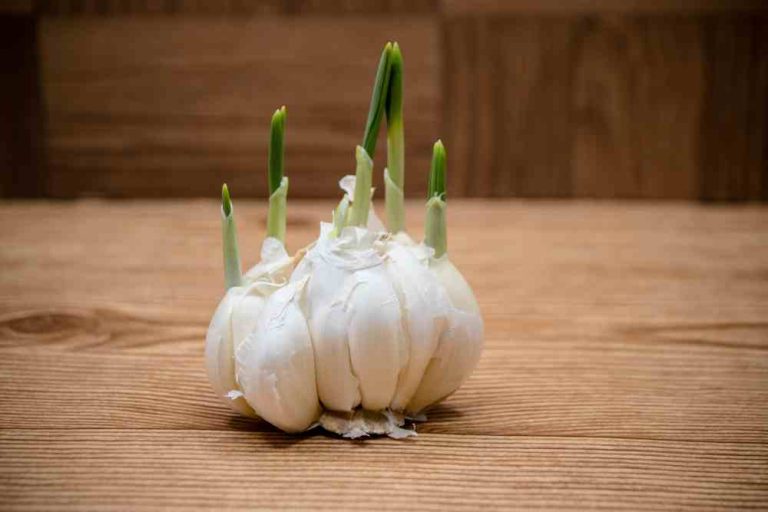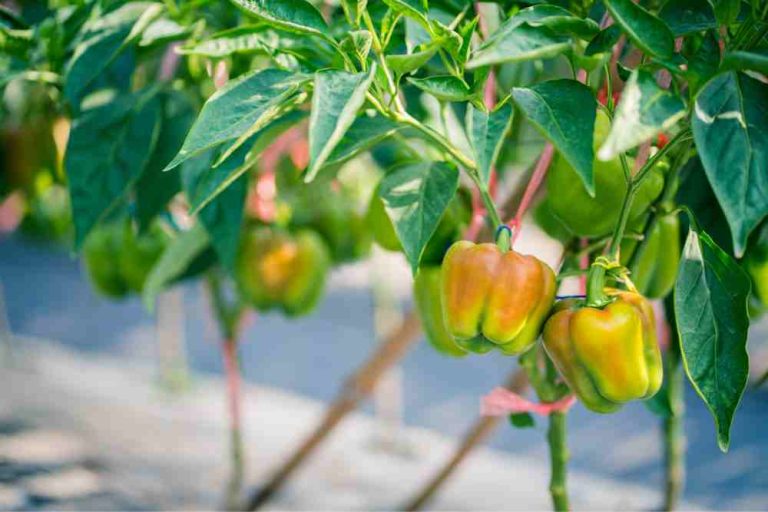How to Grow Your Own Lettuce: A Beginner’s Guide to Fresh Greens
Grow your own lettuce is a rewarding experience that can save you money and give you fresh, healthy greens all season long.
Lettuce (Lactuca sativa) is a well-known leafy vegetable that can be used in a variety of ways, from salad to medical medicines. This is an annual plant in the Asteraceae family. Although its stem and seeds are also harvested, it is commonly grown as a leaf vegetable. Salads are the most common application for lettuce, although they can also be found in sandwiches, soups, and wraps.
It’s also possible to grill it. The inclusion of vitamin C, phenolic compounds, and fiber levels in lettuce contribute to its health advantages. As It is high in vitamin K, it supports bone health and helps to avoid bone fractures if you get enough of it. Lettuce is high in vitamin A, which can help to lower a person’s blood pressure and is important for eye health.
Lettuce Varieties
Head Lettuce (capitata)
Capitata gets its name from its round form. Iceberg and butterhead lettuces are the two varieties of head lettuce, both of which are often seen in supermarkets, are included in this group.
Iceberg Lettuce
While iceberg lettuce is crisp and hearty, it lacks the flavor of other lettuces. You may keep it in the fridge for up to two weeks if it’s unwashed and put in a plastic bag. This variety is twice as long as most other types of lettuce.
Butterhead Lettuce
Butterhead lettuce types yield soft lettuce leaves in neatly folded heads. Self-blanching to a delicate white tint is common in the central leaves. This mild lettuce lends a sweet touch to salads and is named after the delicate butter flavor.
Celtuce Lettuce (Augustana)
Additionally known as asparagus lettuce or celtuce, incorporates a distinctive, large stem. This lettuce selection is common in China, but less common within the Western world.
Leaf Lettuce (crispa)
This variety doesn’t have a head and is instead attached to a stem. As a result, the leaf tends to be a lot of putrescible than head lettuce. A variety of those lettuces have crimson leaves or are darker in color. Leaf lettuce comes in 3 varieties: red, green, and oak. To avoid instant weakening, put off dressing leaf lettuce till simply before serving.
Romaine Lettuce (longifolia)
Romaine lettuce is another type commonly sold in grocery stores. It’s also called the main ingredient in Caesar salad.
Butterhead Lettuce
There are two different types of butterhead lettuce: Boston and Bibb. The Boston variety has small, round, and loosely shaped heads with soft, supple leaves that bruise simply. It’s larger and fluffier than Bibb however each kind of lettuce builds good cups for broiled ground chicken or shrimp. Bibb, on the other hand, is sweet and extra small, and quite expensive.
Radicchio
Also known as leaf chicory or Italian chicory. Fresh purple radicchio can be bitter, but when grilled or roasted, it becomes sweeter. Most romaine lettuces grow up to 20 inches tall and take 60 to 80 days to harvest. Because romaine is able to develop without bolting during the hot summer months, the prolonged growing season works.
Are you ready to learn how to plant lettuce?
It is a fast-growing cool-season crop for fall and spring. It is attractive in both vegetable and ornamental gardens and is suited to container gardening as well.
Grow Your Own Lettuce
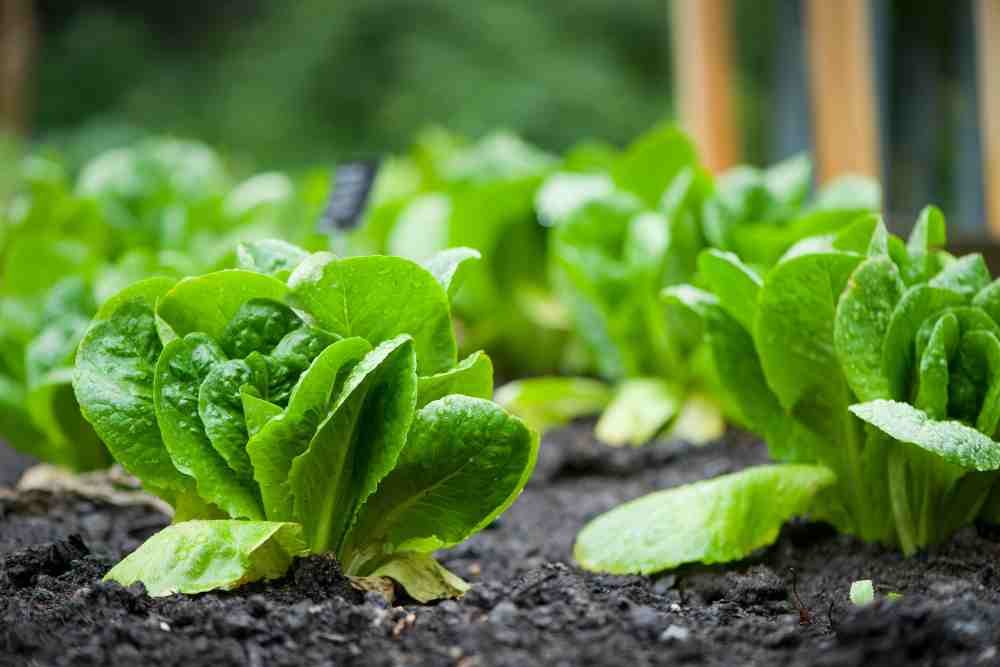
In the spring and fall, a place that receives full sun is perfect for producing lettuce in your garden. Find a location with at least six to eight hours of direct sunlight to grow superb lettuce. In fact, these plants thrive in temperatures ranging from 45 to 65 degrees Fahrenheit (7-18 °C.). When it grows quickly, it becomes more flavorful and the leaves remain delicate.
To encourage rapid leaf growth, mix organic compost or high-nitrogen fertilizer into the garden soil before planting. They grow best in soil with a pH of 6.2 to 6.8. A well-tilled seedbed is crucial because the seed is so small. Germination will be hampered by stones and huge clods of earth. Weeds have a hard time competing with lettuce.
Weeds can be controlled by planting lettuce close together. Most diseases are less likely to occur when sites are changed from year to year. Seeds should be planted at a depth of 12 to 18 inches. Because lettuce seeds require light to germinate, don’t plant them too deeply. Plant lettuce plants 6 to 18 inches apart (depending on the variety) in a sunny, fertile location.
A small layer of soil should be applied to them. Spray enough water to wet the soil. However, don’t get it wet. Seeds normally germinate in 7-10 days. Ensure that your seedlings receive enough sunlight, that the soil is continually moist, and that the temperature (between 18°C to 22°C) is comfortable during the germination process.
When seedlings have 3 to 4 true leaves, they can be trimmed. Thinning refers to the removal of a few plants to allow room for the rest to develop. Before planting into the garden, transplants should have 4 to 6 mature leaves and a well-developed root system. Water the seedlings thoroughly before transplanting them to allow them to store up in the water. It is advised that seedlings be transplanted 21-25 days after seeding. Early evenings are the best time for transplanting (post 4 PM). This will boost their chances of surviving without making it limp.
Before transplanting, it’s a good idea to cover your well-manured soil beds with dry straw. Make a gap in the straw to avoid the transplanted saplings from coming into touch with it. Before transplanting the seedling, remove a handful of soil from the bed and replace it with manure. This will keep the water in the roots of the plant rather than soaking the leaves excessively. After the transplanting process is complete, cover your plants with a shade cover for the first 5-6 days. This aids the saplings’ recovery from the operation and restores their appearance of health.
After they have fully recovered, the plants will continue to thrive. If caterpillars and grasshoppers become a problem at this point, you can spray the plants with a simple homemade treatment. Whenever bugs cause problems, dilute Neem oil or cow urine with water and spray it on the plants.
Fertilize plants once they reach a height of 3-4 inches and are securely planted in the soil. Organic waste from your home, such as vegetable or fruit leftovers, would be the ideal fertilizer for your plants. For 3-4 weeks, apply the fertilizer at least once a week. Harvesting times will vary depending on the climatic conditions in your area and the type of seed you’re using. You would be able to harvest the delicious goodness of your lettuce plants Usually, after 6-8 weeks of planting the seeds.
Harvesting and Storage
The ideal time to collect lettuce is early in the morning. The leaves will be more fresh and crisp during this time. You can always harvest in the evening if you can’t harvest in the morning. However, before stepping out to your garden with your harvesting devices, water the plants and wait 15-20 minutes.
It’s time to harvest the leaves when they reach a length of 4-6 inches. Young leaves, which provide a delightful flavor to salads, can also be collected. While harvesting, pick the outer leaves to encourage regrowth. If you’re using scissors, cut 1 inch above the base of the leaf. Harvest the bibb and loose-leaf lettuce leaves when they reach the desired size.
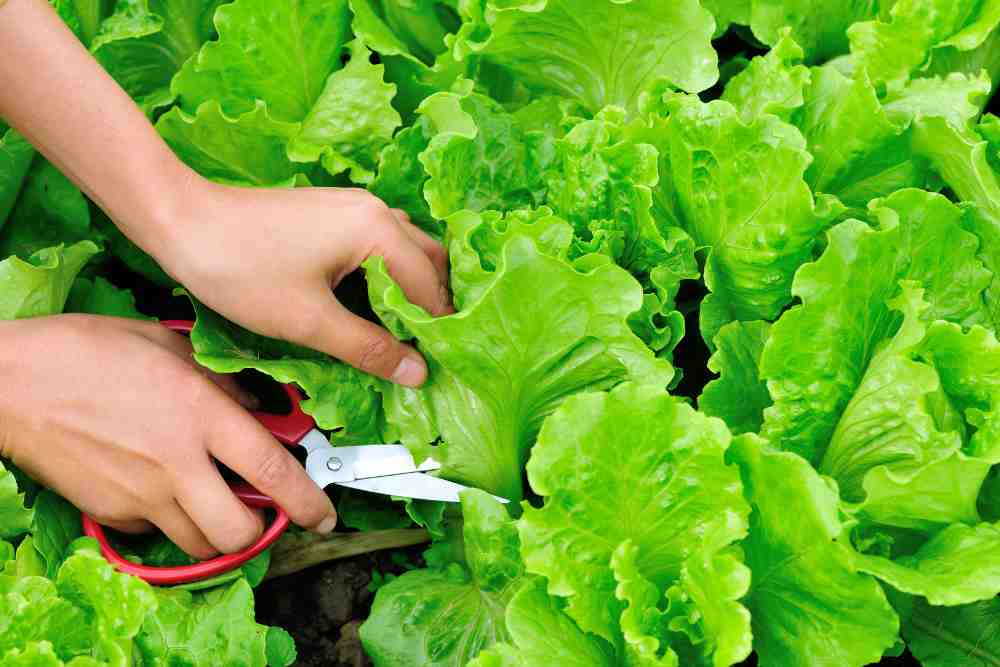
Cut the larger, outer leaves first, then let the smaller, inner leaves have time to grow. Once the head of romaine, iceberg, or bibb lettuce has reached full size, cut plants at soil level with a sharp knife. It’s possible that a smaller head will sprout in its stead.
Wash lettuce leaves just before using them to keep them crisp and fresh. It tastes best when the weather is chilly, which is why it’s a great fall crop. When the temperature rises, the plants will go to seed. By the time the leaves begin to extend and send out a seed stalk, they are bitter (bolting).
Pick all of your lettuce as quickly as possible and store it in the refrigerator if this happens. Lettuce, are notoriously difficult to store. It’s always possible that the crisp-looking leaves will lose their crispness. However, if you continue to wish to store lettuce leaves, wrap them in a very dry newspaper or paper towel and store them in the deep freezer. Lettuce kept in the deep freezer can stay recent for a minimum of a handful of weeks.
Is it possible to grow lettuce in hot weather?
Lettuce dislikes hot weather. The plant panics and decides to start producing seeds as soon as possible. As seed stems grow, the plant begins to transmit nutrients to seed development. To give filtered light and delay bolting, cover plants with a shade cloth.
Even during the hottest parts of the growing season, watering should be sustained. In the summer, arranging your garden so that taller plants such as tomatoes or sweet corn shade lettuce might help prevent bolting.
The majority of lettuce cultivars can be grown hydroponically as well. Growing lettuce hydroponically is simple; even a beginner farmer can succeed. However, you must first choose the right hydroponic system, properly set it up, and understand the basics of hydroponic growth. Choose a location and an appropriate hydroponic system.
There are many different systems to choose from, some of which are better for specific crops and others for specific vegetables. Others are better suited to large outdoor gardens, while others are better suited to small interior gardens.
Setting up your hydroponic system; may appear intimidating to some since it sounds complicated; however, it is actually quite simple in reality, it is quite simple, but you need to know how to do it. Hydroponics does not require a lot of maintenance so lettuce is fairly simple to worry for. The best hydroponic systems to grow lettuce are drip and aeroponic systems.
Drip System
Irrigation is provided gently and regularly, it can be adapted to any size and shape of space. As the pump does not need much pressure, it does not make much noise. It recycles the nutrient solution efficiently.
Aeroponics
This advanced hydroponic system is actually excellent for lettuce and it gives excellent yields, as it prevents pathogens from spreading, and it actually uses less water and nutrient solution. But aeroponics isn’t terribly appropriate for the outdoors. It’s hard to stay the atmospherical conditions within the vapor chamber stable if you’ve got a little garden.
Pest and Diseases
Downy Mildew
Once established, downy mildew is a fungus that can infect up to 80% of an area. This disease frequently affects mature leaves. Lettuce produces a white or gray fluff on the underside of the leaves, as well as a yellow region on the upper side. The leaves will eventually turn brown and die if it becomes infected.
Keep your garden weed-free throughout the winter since this disease can survive on weeds in and around your garden. Moisture exacerbates the problem, so keep the leaves dry with drip irrigation or a soaker hose. To help fight this disease even further, look for disease-resistant lettuce cultivars. Use an organic fungicide to treat downy mildew concerns as well.
Powdery Mildew
A white, fine covering forms on the tops of the leaves (mycelium). As the condition progresses, the layer becomes grey and dusty in a short period of time. As a result of the attack, the leaves turn brown and lose their brilliance. The tissue beneath the dusty layer dries out and separates from the plant ultimately. The fungus damages the plant when there is too much dampness and not enough sunlight.
Powdery mildew fungus is spread through spores carried by vectors (water, air, animals, people, tools, etc.). The disease can survive the winter on the vegetative waste left on the field. The adoption of resistant species, the avoidance of sprinkling irrigation, and the gathering and destruction of plant remains are all things that should be considered after harvesting are all recommended.
Lettuce Mosaic Virus
Wrapper leaves infected with the lettuce mosaic virus are dull, twisted backward, and have enhanced marginal serration. Romaine lettuce leaves, in addition to leaf blistering, frequently show the same symptoms.
Butterhead lettuce suffers from stunting and severe chlorosis. Remove and destroy any plants that show signs of the disease right away. Use a natural insecticide like Neem Seed Oil to get rid of aphids.
Lettuce Septoria Blight
Yellow patches emerge on the basal leaves, which darken after a while. The disease evolves and within the middle of the spots seems a whitish mycelium and a large number of little black dots. The spot’s area is bordered by a brown edge.
All of the plant’s organs can attack it. The disease is spread via the spores that are carried by the vectors (water, air, animals, people, tools, etc.). The fungus survives the year on the seeds generated by the infected plants and on the vegetable debris on the soil’s surface.
Bottom Rot (Rhizoctonia solani)
Bottom rot is a fungus that infects mature plants in soil with poor drainage. Look for necrosis on the stems as well as the lower leaves. To put it another way, look for brown, fading areas. The plant will also wilt and begin to decompose. To ensure appropriate drainage, add compost to your soil before planting lettuce. To avoid overwatering, use a soaker hose or drip irrigation.
Aphids
Aphids create a quadruple threat. They start by suck water and nutrients from plant structures, inflicting leaf curling and therefore the death of young plants. Second, they’re often parasitized, and dead aphids don’t wash far from the leaves. Then, aphids function as virus vectors, contributing to the unfold of diseases like lettuce mosaic. Finally, aphids leave plenty of honeydew on the leaves, which inspires the expansion of sooty mold.
Thrips
Thrips will attack the complete lettuce plant at any stage of development, leading to leaf deformity. They will additionally transmit infections to lettuce.
Caterpillars
The family Lepidoptera (caterpillars), which incorporates various species of caterpillar, armyworm, maize earworm, and cabbage caterpillar, is the most devastating cluster of insect pests that attack lettuce.
Each kind has its own feeding habits, with completely different life cycles feeding on different components of the lettuce, however, the end consequence is the same: porous, twisted leaf – even once eaten whole. Some caterpillars have natural predators that can be cultivated. Otherwise, an efficient insecticide may be required.
Leaf Miners
Leaf miners lay eggs on the upper leaf surface, which in turn become maggots. The adults of leaf minors eat the limb on the flower. Leaf minor develops mostly in protected areas. only if the temperatures allow, leaf minor can attack the other field crops also.
- 29 Bucket Gardening Ideas for a Lush, Compact Garden - October 30, 2024
- 20+ Chic Boho Bedroom Ideas for a Cozy and Stylish Retreat - June 20, 2024
- 12+ Modern Boho Living Room Ideas to Create a Unique Oasis - June 10, 2024

